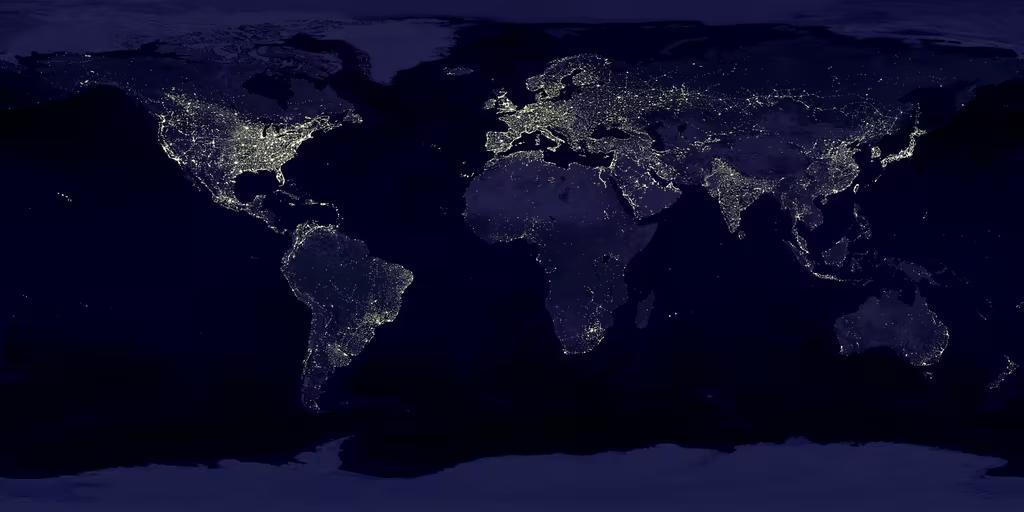
Immigration policy needs to adapt
The United Nations has released its 2022 Revision of World Population Prospects. Despite the headline-grabbing expectation that the global population will pass 8 billion next year, population growth is set to slow in the next 10 years. More importantly, the countries driving growth in the working-age population are expected to change, which has implications for New Zealand’s immigration policy.
Global population growth projected to slow
According to the UN, between 2011 and 2021 the world population grew by 836 million. In the next ten years, the UN’s median projection has the population growing by 707 million – a fall of 15% on growth in the previous ten years (see chart 1). Slower population growth is the result of lower fertility rates, which tend to fall as countries become more economically developed.
The global population is also aging with the number of people aged 0-14 years expected to fall by 51 million in the next ten years and the number of people aged 65 years and older expected to rise 292 million (a 36% increase on growth in the previous ten years).
Focus on prime working age
In this article we will focus on people of prime working age (15 to 64 years) because these people are most likely to be working migrants. Globally, the number of people aged 15 to 64 years is projected to grow by 497 million in the next ten years, a 9% fall compared with growth in the previous 10 years.
Europe, China will see falling populations
Growth in the working-age population is expected to weaken in the next ten years because a number of countries are projected to experience working-age population decline. China’s working-age population is projected to fall by 23 million and is mainly responsible for the falling working-age population in Eastern Asia in chart 2. Elsewhere in Eastern Asia, Japan’s working-age population is projected to fall by 4.9 million, South Korea’s by 3.9 million and Taiwan’s by 1.5 million. Although, these declines will be offset by rises in India and other Asian countries (see below).
The working-age population of Europe is projected to continue falling mainly because Germany’s working age population is projected to fall by 4.5 million, Italy’s by 3.5 million and Spain’s by 1.9 million. Smaller declines are expected across every other country in Southern Europe.
India and Africa projected to drive growth
Southern Asia will be the key source of global working-age population growth in the next ten years. India’s working age population is projected to grow by 99,000, Pakistan’s by 37,000 and Bangladesh’s by 12,000. South East Asia, which includes Indonesia and the Philippines, and Western Asia, which includes Iraq, Syria and Yemen, will also make significant contributions to growth (Southern, South-Eastern, Wester and Central Asia make up ‘Other Asia’ in chart 2).
Africa will make a bigger contribution to growth than it has in the past. Nigeria’s working-age population is expected to grow by 38,000 in the next ten years, Ethiopia’s by 22,000, the Democratic Republic of Congo’s by 21,000, Egypt’s by 15,000 and Tanzania’s by 14,000 (see chart 2).
Competition for Indian and African workers
Growth in the working-age population is a key source of economic growth for many countries, New Zealand included. More people generally means a bigger economy and the better educated those people are, the more developed an economy can become. For countries whose working-age population growth starts to slow or even fall in coming years, immigration policy will be an ever more important tool to sustain their economic growth and development.
Attracting talented migrants can increase the skill levels of the workforce which can lead to rises in economic productivity. Migrants also increase spending, which can grow the economy. So it stands to reason that there will be fierce competition to attract workers from countries that do have a growing working-age population to countries that don’t. There are also ‘push’ factors as migrants in poorer countries are incentivised to find work in richer countries in the hope that it will improve their income and quality of life.
New Zealand depends on migrants
New Zealand is an open economy with a large migrant workforce. Studies have shown that much of New Zealand’s economic growth in recent years has been the result of us attracting working age migrants to grow the workforce (rather than productivity growth). The closing of our borders in the last couple of years has brought our reliance on migrants into even sharper focus as skill shortages have hit historically high levels. We also export much of our domestic talent with New Zealand’s diaspora estimated to number around 1 million, most of whom live in Australia.
And will need to adapt
In terms of global migration flows, the number of migrants coming to New Zealand is a drop in the proverbial ocean. The broad population trends outlined in this article are not going to have a significant, immediate effect. But competition is all about finding and maintaining an edge. So, immigration policy makers would do well to keep abreast of the projected changes and adapt to them.
In the post-COVID world, New Zealand will need to work harder to attract the best migrants. Our focus on minimising migrant exploitation is commendable but I don’t think it will be a key draw card for many working migrants. Earnings, quality housing, affordable housing, good education and overall quality of life are probably higher up on migrants’ priorities when they are considering which country to move to. Housing affordability is obviously an issue in New Zealand which is not an easy fix.
Looking forward, we need to adapt to changes in the countries we traditionally source migrants from. Between 2012 and 2021, 58% of work visa approvals were for migrants from just seven countries: India (16%), the UK (10%), China (9%), the Philippines (8%), Germany (6%), France (5%) and the USA (4%).
Working age population trends suggest it will be harder to attract migrants from China, Germany, and France – all of which will be experiencing falling working-age populations, as well as the UK and USA where working-age population growth is projected to be very weak. So, we may find ourselves more dependent on India and the Philippines where the working-age population is projected to grow. New Zealand might also find increasing numbers of visa applications from African migrants.
Integration of migrants has been a challenge for some time as New Zealand shifted away from the UK as our key source country. Integration will continue to be a challenge. The UK and New Zealand have a very similar cultures whereas India and Africa are very different to New Zealand. Indian migrants may find it easier to integrate into the New Zealand culture because there is a fairly large Indian community already living and working here. African migrants will find only small African communities already living here, which will make integration all the more challenging.
It's almost a cliché to say that change is the only constant. That is certainly true for migration flows. In the past 20 years, New Zealand has become an open, multi-cultural society because it has been able to adapt to change. Adaptation is now the norm.























